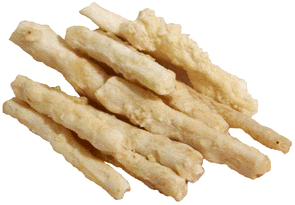...Best of Sicily presents... Best of Sicily Magazine. ... Dedicated to Sicilian art, culture, history, people, places and all things Sicilian. |
by Roberta Gangi | ||
Magazine Index Best of Sicily Arts & Culture Fashion Food & Wine History & Society About Us Travel Faqs Contact Map of Sicily |
Literature is full of references to manna from Heaven, but this is the real thing. Tasting vaguely like fresh maple sugar, manna eletta, a sweet product (about 45% d. mannitolo) of the manna tree (fraxinus angustifolia), the narrow-leaf ash or manna ash, frassino in Italian, actually contains only about three percent glucose by volume and is high in zinc. In Sicily this tree grows wild in the Madonie Mountains, and is now cultivated on farms in the area around Castelbuono and Pollina. The whitish sap flows in July and August, forming thin stalactites which hang like icicles from the trees' branches. It is possible to harvest even more of it by splicing slits in the bark. The comparison to maple syrup is appropriate, though the composition of manna differs considerably from that popular American product. Manna is sold in small rods cut from the long drippings. Much folklore has developed around manna, and also a great number of health claims, many of which are not scientifically substantiated. Yet the laxative value of the substance is well established, and as a natural sweetener (especially for diabetics and others who must watch their sugar intake) containing very little glucose manna is a true rarity. We don't really know when the domesticated trees were introduced in Sicily. There are several obscure Greek references to manna trees. The Biblical descriptions are difficult to reconcile with the trees present in Sicily, whose name, however, certainly derives from the term used in the Book of Exodus. The narrow-leaf ash, as distinguished from the closely-related European ash, has brown buds, and grows to a height of thirty meters. Its range is essentially central and western Mediterranean, though it is cultivated into central France. A subspecies (fraxinus oxycarpa) grows in eastern Europe as far north as the Czech Republic and in southwest Asia as far east as Iran. The wood of the manna ash is similar to that of other ashes. About the Author: Roberta Gangi has written numerous articles and one book dealing with Italian cultural and culinary history, and a number of food and wine articles for Best of Sicily Magazine. | |
Top of Page |
 "And when
the dew that lay was gone up, behold, upon the face of
the wilderness there lay a small round thing, as small as the hoar frost
on the ground. And when the children of Israel saw it, they said one to
another, It is manna: for they wist not what it was. And Moses said unto
them, This is the bread which the Lord hath given you to eat. This is the
thing which the Lord hath commanded, Gather of it every man according to
his eating." -- Exodus 16:14-16
"And when
the dew that lay was gone up, behold, upon the face of
the wilderness there lay a small round thing, as small as the hoar frost
on the ground. And when the children of Israel saw it, they said one to
another, It is manna: for they wist not what it was. And Moses said unto
them, This is the bread which the Lord hath given you to eat. This is the
thing which the Lord hath commanded, Gather of it every man according to
his eating." -- Exodus 16:14-16